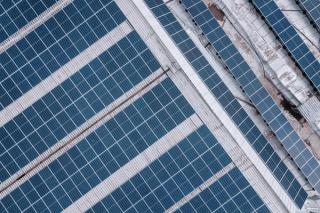
Lessons learned from remote power generation experience
- Post Date
- 20 January 2023
- Read Time
- 5 minutes

SLR's Ric Horobin is currently managing a project assessing the feasibility of installing solar PV arrays at eleven remote sites across the Yukon, Canada. Ric and the team are working on this with along with ATCO, the Na Cho Nyak Dun Development Corporation, and Ben’s Electric.
Originally seeming like a straightforward project - first, they would assess the existing load requirements for each site, all of which were supplied by diesel generators; and then work out the solar PV and battery electric storage (BESS) installation - their goal was to optimize the system to give the best return in terms of the reduction in greenhouse gas emissions per dollar spent. As is often the case, the reality has proved somewhat different.
In the article below, Ric discusses some of the challenges the team encountered in the Yukon, both technical and political, highlighting their main concerns, and lessons learned:
The sites we are looking at fall into two main groups:
- Those that currently run their own diesel generators to supply the electrical power for the site and
- Those that are linked to one of the several diesel generation microgrids that are present across the north.
The proposed installations in each group have their own challenges which I will discuss below. As with any project, getting clear direction and agreement between all parties on the desired outcome is important to establish at the outset. Not all owners are looking for the best return in terms of reduction in greenhouse gas emissions per dollar spent; some are prepared to spend more to get additional reductions in GHG emissions and this is something worth understanding clearly.
Fundamentally, for remote sites, 100% renewable systems are very difficult to design using variable renewable energy resources like PV solar. There will be times when there isn’t sufficient sun to power a site and charge up the BESS, meaning that alternative sources of power must be available for extended periods (i.e., multiple days at a time, or more). This is normally diesel. Systems that use other renewable technologies are possible (e.g., bioenergy), but the cost for small sites remains high.
Remote sites that are staffed on a seasonal basis (i.e., not 100% of the time) present a particular issue for solar PV and BESS installations. This is because of the security concerns over potential theft of unattended power generation and energy storage resources. Ideally, the componentry must therefore be transportable across rough roads, which for standard industrial electronic equipment, is a challenging proposition.
Temperature concerns
Batteries need to be kept above a minimum temperature, which in most locations in North America at lower latitudes isn’t an issue, but the air temperature in some locations in the Yukon can drop below the recommended minimum storage temperature of batteries. This means that either batteries have to be installed in heated buildings, which clearly increases the project cost and uses power just to keep the system operating, or need to be removed over the periods when sites are not operating. Batteries can be transported with care, but do not like being driven along rough mining access roads!
Loss of equipment
Equipment security in remote locations where less accountability prevails is a perpetual concern. Installed solar panels seem to be popular for target practice and have been known to disappear over the winter. Both these factors increase the cost, either due to regular replacement or additional secure storage.
Microgrid capacity
Where sites are connected to local micro-grids, there may be capacity to supply power back to the micro-grid, improving the return on investment. However, many of the small Yukon micro-grids are at or near capacity, thereby limiting what additional renewable power can be supplied back into the grid during times of peak generation (i.e., the hours around midday for solar power). This means that additional power is effectively wasted through controlled curtailment, which for any power generation system is an environmental issue resulting from energy efficiency losses.
Diesel generators
At several of the sites we have been looking at, there is the added complication that diesel generators often have a heat recovery system installed to provide heat to buildings during the winter months. As it turns out, this is less of an issue than first anticipated because the heat requirement is greatest when the solar output is at a minimum (i.e., nighttime), meaning that generator back up supply is required in any case. This would not be case with systems that include other forms of renewable power. The lesson here is that offsetting diesel generation needs to be done in a way that considers the combined heat and power requirements of a remote site. Solar power can be considered as a means of providing heat
Additional assessments
Finally, in the Yukon, small solar installations do not usually trigger an assessment under YESAA, but there are some aspects of a project that might mean an assessment is needed. These include tree clearance beyond a certain size or earth moving on certain types of land. It’s worth checking up front whether the project is likely to require and assessment and make sure this is allowed for in the schedule and cost.
Takeaways
The overall point I want to make is that there is a benefit in installing solar PV at remote locations in northern latitudes and contributing to the reduction in diesel use within the territory that is required to be made to meet the GHG reduction targets set by government, but that it needs to be done with care and consideration of all aspects of a site’s energy use.
Recent posts
-

-

Industrial noise compliance in Alberta: Understanding Directive 038 and Rule 012
by Arthur Kupper
View post -
